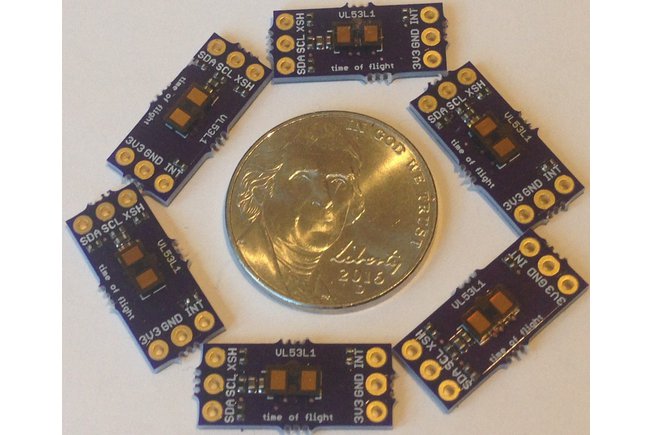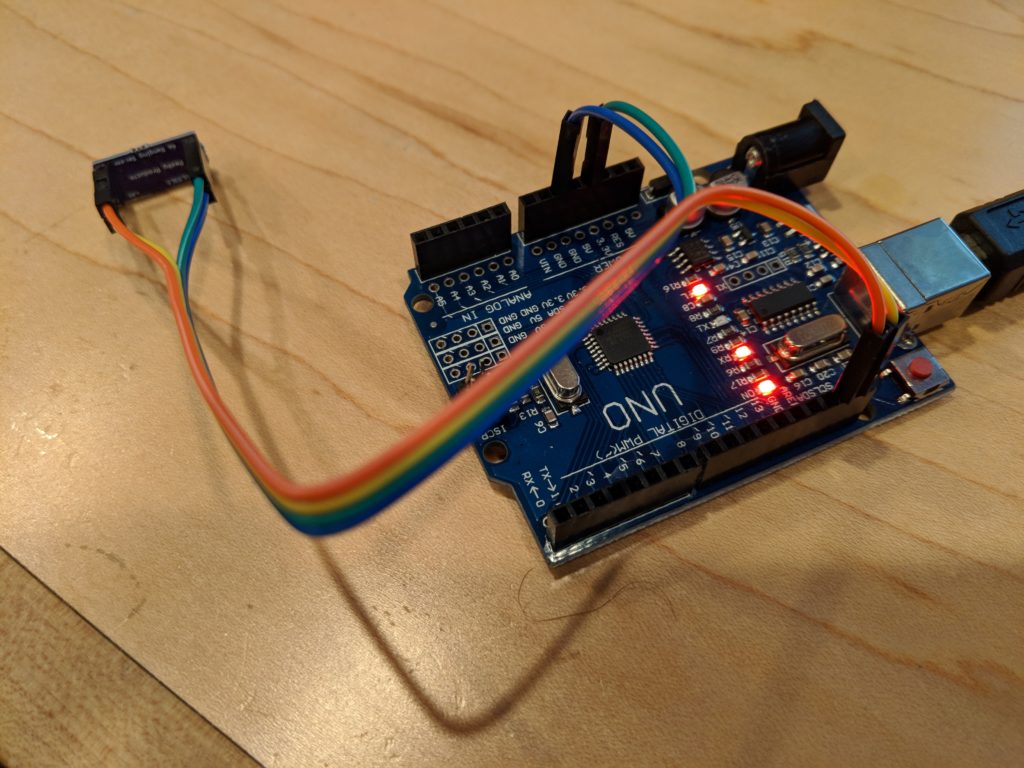
A year after announcing it, ST has finally released the new version of its tiny laser time-of-flight distance sensor with twice the range of the previous version. Called the VL53L1 (the previous version was the VL53L0), it’s available in chip form for $5 and in a breakout board from Tindie for $19 or a nicer one with connectors and mounting holes from Sparkfun for $25. These are chips originally designed for proximity sensors for smartphones (that’s how the phones can tell if you’re holding them up to your ear and dim/turn off the screen), and are very reliable. The claimed range is up to 4m indoors (up from 2m with the previous version), and since it’s a laser it has a very narrow beam (unlike sonar) and is appropriate for obstacle detection in DIY Robocars.

Sparkfun has just release an Arduino library for it, and the example code works well with both the Sparkfun and Tindie versions. If you want to try it, just connect either breakout boards SCL and SDA pins to the Arduino SCL and SDA pins and the voltage to the Arduino’s 3.3v pin and GND, as shown here:

In my testing so far, I’m only getting reliable reading up to 2.3m (7.5 feet), but there are some special high-power settings that you can enable, although they are not yet supported in the Sparkfun library. That said, that’s more than enough for 1/10th scale robocars indoors, and is far more accurate than the broad-beam sonar or IR sensors that would otherwise be used for low-cost obstacle detection.
Outdoors, it’s pretty much useless, especially in bright sunlight. Expect no more than 1m outdoors even in the shade, so I’d recommend a different sensor such as sonar or a somewhat more expensive 1D lidar like the TFMini ($40) for that.

The Datasheet says the FOV (Field Of View) is 27 degrees, so the laser is NOT collemated very well at all.
I need a range finder with a much smaller FOV, like 2 degrees or so ( like the seeed tfMini).
Is there a way to collemate one of these, or will it not work right anymore if I put a lens in front of it?